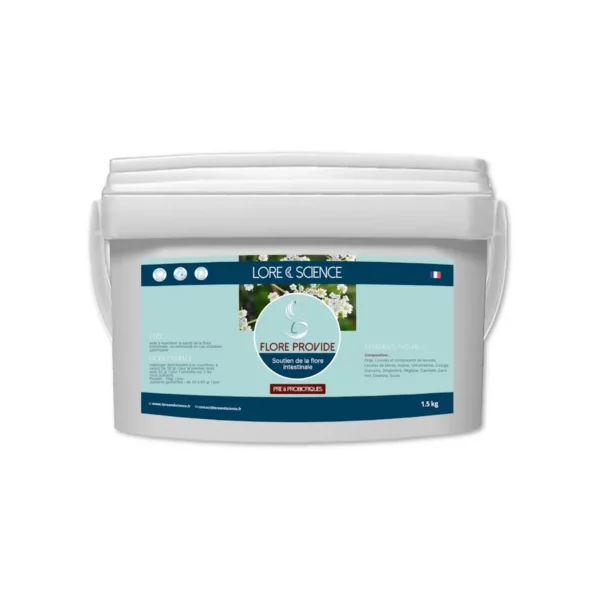Strangles is a serious infectious disease that mainly affects horses. Known since ancient times, this pathology continues to present a challenge to owners and veterinarians alike due to its highly contagious nature. In this article, Lore & Science tells you all you need to know about equine strangles: its symptoms, causes, treatment, and the preventive measures needed to protect horses.
What is strangles?
Strangles is a particularly dreaded ailment among horse owners. This bacterial respiratory disease is caused by the pathogen Streptococcus equi subsp. equi. A real infectious scourge, and although particularly prevalent in young horses, it hardly discriminates, sparing no equine, whatever its age.
Cold snaps and other environmental stressors can increase a horse's susceptibility to this disease. Strangles primarily targets the upper respiratory tract, generating a cascade of symptoms that include profuse nose blowing and persistent coughing.
This infection mainly attacks lymph nodes in the head and neck area, causing them to become inflamed and develop into purulent abscesses. Strangles can not only cause great suffering to the animal, but can also spread rapidly within a stable. Transmission occurs mainly through direct contact between horses, by inhalation of infected respiratory droplets, or through contact with contaminated everyday objects, such as water troughs, feeders, grooming equipment or groomers' clothing.
Worse still, the bacteria can survive in the environment for several weeks, increasing the risk of spread. Horses can also become asymptomatic carriers, harboring the bacteria in their sinuses or guttural pouches and transmitting it to other horses without showing clinical signs. Detecting even the slightest case of strangles in a stable requires strict quarantine and veterinary care.
What are the complications of strangles?
Complications of the disease remain low, averaging 15-20% of cases. Nevertheless, when they do occur, they take on more dangerous forms for equines.
The erratic shape
When Streptococcus equi bacteria spread to other areas of the body, the disease evolves into what is known as the "erratic" or "bastard" form. The latter may occur simultaneously with the classic form of strangles, or appear at a later stage. In this scenario, the bacteria may migrate to areas such as the brain, mammary glands, lungs or abdomen, forming abscesses in these regions. The spread of infection to the lungs is particularly fearsome, and is one of the main causes of death due to strangles complications. Equids affected by this erratic spread of the bacterium can suffer severe and persistent symptoms, and require urgent veterinary intervention.
Immune-mediated disorders
Although rare, immune-mediated disorders represent another category of serious complications associated with strangles. Hemorrhagic purpura is an exaggerated immune system response manifested by inflammation of the blood vessels. This condition leads to marked edema of the head and limbs, as well as petechiae, small haemorrhages on the mucous membranes. These symptoms generally appear between two and six days after the first signs of strangles appear. Colic may also occur if the small intestine is affected, further complicating the clinical picture.
Myopathies associated with strangles can take many forms. One of the most severe manifestations is muscle infarction, a serious complication of hemorrhagic purpura affecting skeletal and cutaneous muscles, as well as those of the respiratory and digestive systems. This condition has a very guarded prognosis. In addition, two types of rhabdomyolysis can develop: one characterized by acute muscle necrosis, while the other manifests itself as progressive muscle atrophy. These conditions require close monitoring and specialized veterinary care to manage associated complications and improve the animal's chances of recovery.
How to treat equine strangles?
Diagnosis of strangles relies on a combination of clinical signs and laboratory tests. Veterinarians take samples of nasal discharge or abscess pus for culture and identification of Streptococcus equi. PCR (polymerase chain reaction) tests can also be used to detect the bacterium's DNA. Once the disease has been identified, treatments vary according to severity.
As a general rule, we recommend limiting the use of antibiotics. Most of the time, rest and time are sufficient for recovery, alongside the strictest measures to prevent and limit the spread of the disease. In the absence of complications, it usually takes two to four weeks to return to normal.
A well-balanced diet is a good way to help your horse get back into shape after a cold or respiratory problems, such as the coughing often associated with strangles. As a complement, you can add essential oil synergies such as Cold Stop to your equine's basic ration, to support overall respiratory health.
-
Cold Stop - Horse cold
29,90 € - 79,90 €
Conclusion
Well-known and feared in the equestrian world, strangles is a serious disease requiring special attention due to its contagious nature and potential complications. Prevention, rigorous hygiene and vigilance remain the keys to controlling the spread of this infection. In all cases, prompt veterinary intervention and strict quarantine rules can limit the spread of this highly contagious disease.
Share your experience or questions with us in the comments ↓
















